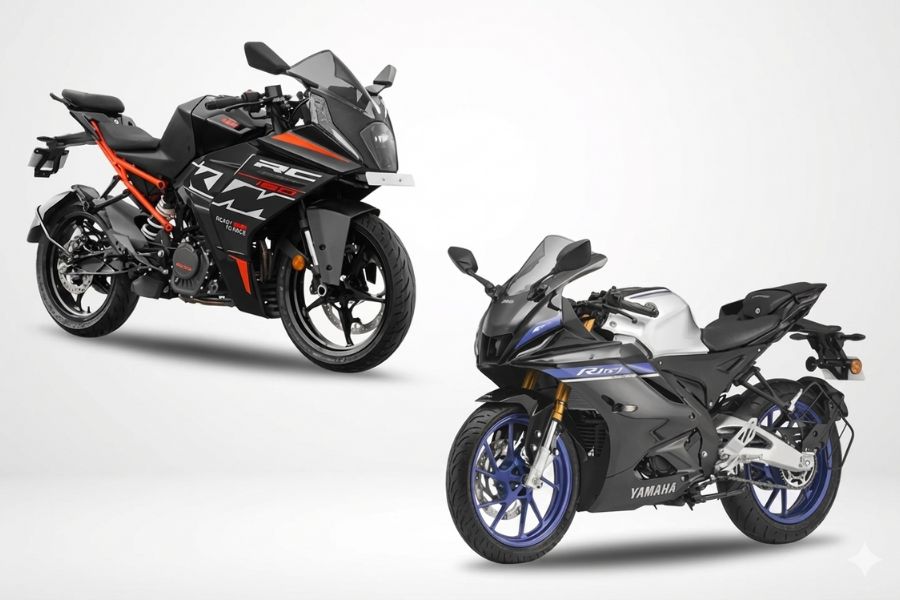Monsoon Bike Riding Tips
With the monsoon approaching, it’s essential to prepare yourself and your motorcycle to ensure a safer and more comfortable ride. Here are some tips to help you navigate the rainy season effectively:
Pre-Ride Preparation
- Routine Service: Ensure your bike is serviced before the rainy season. Any existing issues can become more problematic in wet conditions.
- Tyre Condition: Check your tyres for wear. Replace them if they’re near the end of their lifespan. Adequate tread depth is crucial for dispersing water and maintaining grip on wet surfaces. Also, replace tyres that have hardened or show signs of cracking.
- Tyre Pressure: Reduce tyre pressure slightly (1-2 psi below the manufacturer’s recommendation) to increase the contact patch with the road, enhancing grip. However, don’t overdo it, as too low pressure can negatively impact handling.
- Waterproof Gear: Invest in quality waterproof gear. If on a budget, get rain gear that fits over your regular riding attire. Ensure it’s snug enough to avoid flapping but loose enough for comfortable movement.
- Footwear: Waterproof boots are crucial to keep your feet dry, enhancing comfort and control.
- Visibility: Use brightly colored or reflective rain gear to increase visibility. Avoid dark or tinted helmet visors; clear visors provide better visibility in low-light conditions. Keep your visor clean and consider replacing it if it’s worn out.
On the Bike
- Smooth Control: Wet roads reduce traction, so smooth and gradual inputs on the throttle, brakes, and steering are essential to avoid losing control.
- Braking Techniques: If your bike lacks ABS, practice progressive braking. Ease off the brakes if you feel the tyres starting to lock up.
- Speed Management: Reduce speed, especially during the first rains, as the roads can be extra slippery due to accumulated oils and grime.
- Avoid Slippery Surfaces: Stay clear of road markings, manhole covers, and the center of the lane where oil tends to accumulate. Follow the wheel tracks of vehicles ahead to benefit from a relatively drier path.
- Maintain Distance: Increase the distance between your bike and the vehicle in front to allow for longer braking distances and to avoid water spray.
- Headlights: Keep your headlights on even during the day to improve visibility to other road users.
- Avoid Puddles: Steer clear of puddles, as they may hide potholes. If unavoidable, navigate them slowly and steadily to prevent splashes and potential water damage to your bike’s components.
Cornering in the Rain
- Smooth Movements: Avoid sudden shifts in body position, braking, or steering. Gradual and smooth inputs help maintain traction.
- Reduced Lean Angles: Maintain a more upright position to optimize grip.
- Avoid Trail-Braking: Slow down before entering a turn and avoid braking while leaned over, unless your bike has advanced cornering ABS.
Post-Ride Maintenance
- Regular Cleaning: Pressure wash your bike more frequently to remove muck and prevent corrosion. Ensure the bike is thoroughly dried after washing.
- Chain Care: Pay extra attention to the chain, cleaning and lubricating it generously to extend its lifespan.
Tips for Electric Two-Wheelers
- Battery Safety: Be cautious of road imperfections, as the battery pack is typically low. Avoid large potholes and speed breakers.
- Throttle Management: Use modes with gentler throttle response to prevent traction loss.
- Keep Moving Through Puddles: If you must pass through a puddle, try to keep moving to avoid water seepage into critical components.
- Charging Precautions: Charge your e-scooter or e-bike in a shaded area to prevent water seepage into the charging port or charger, despite their waterproof design.
By following these tips, you can enhance your safety and comfort while riding in the monsoon, ensuring both you and your bike are well-prepared for the rainy season.
Read More:




